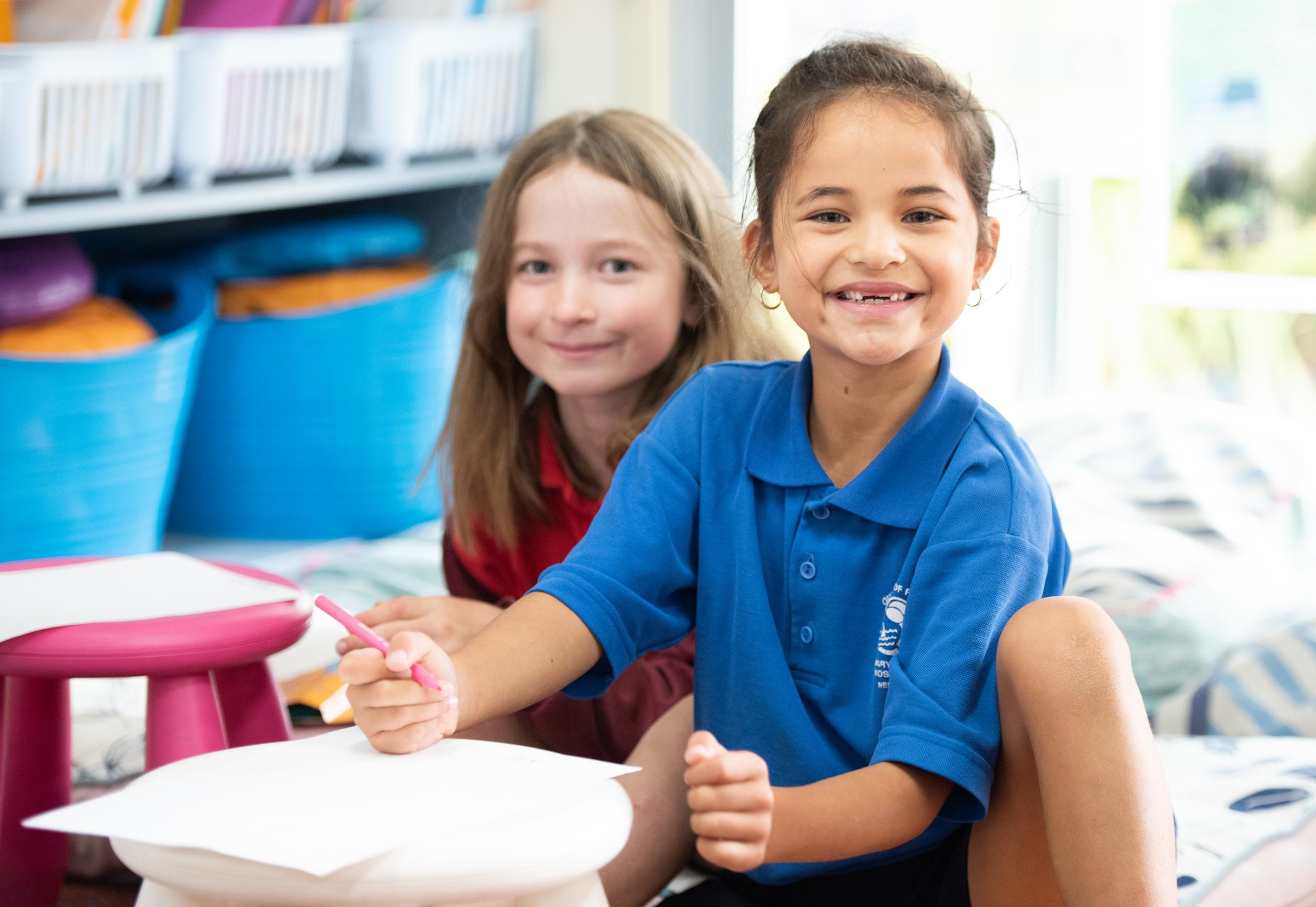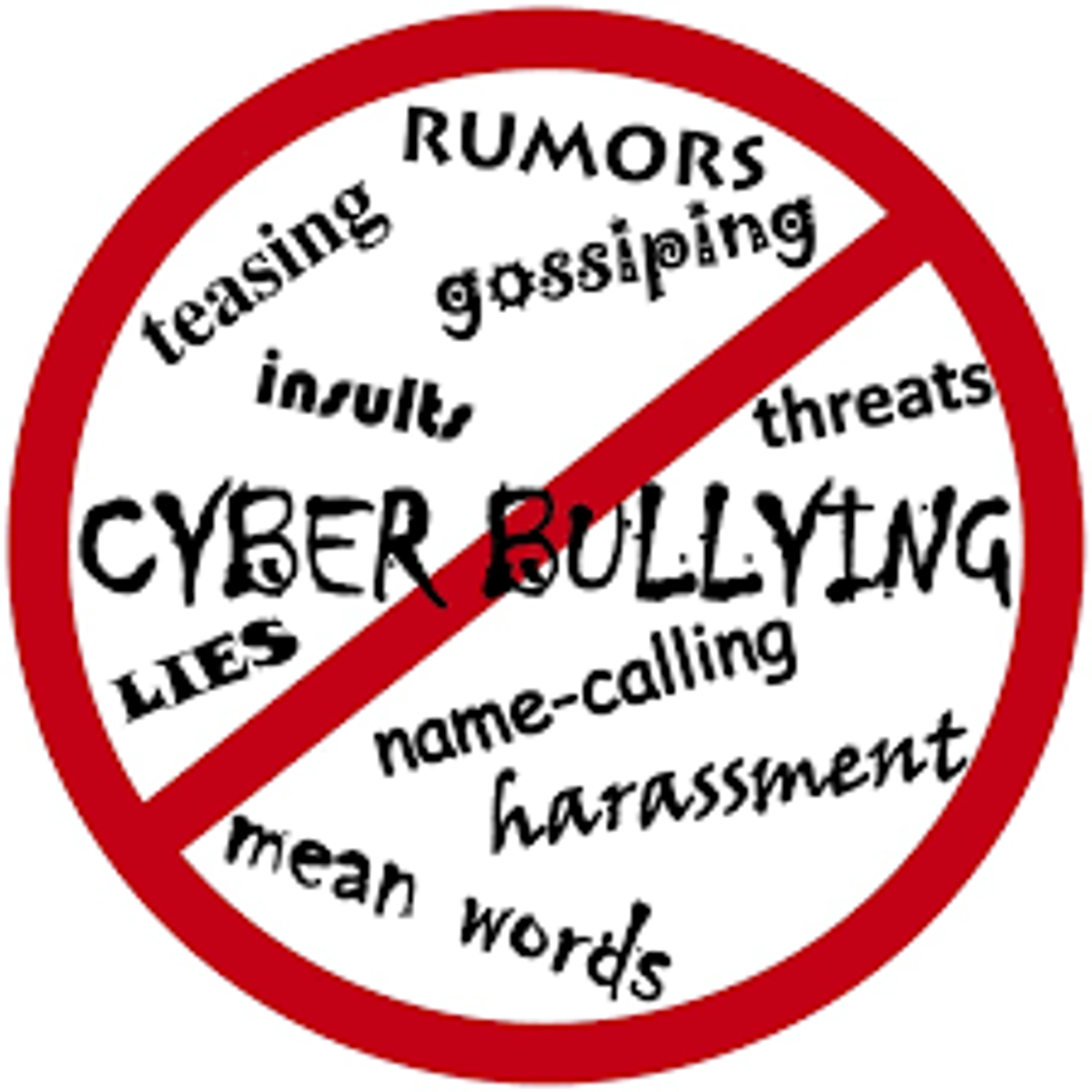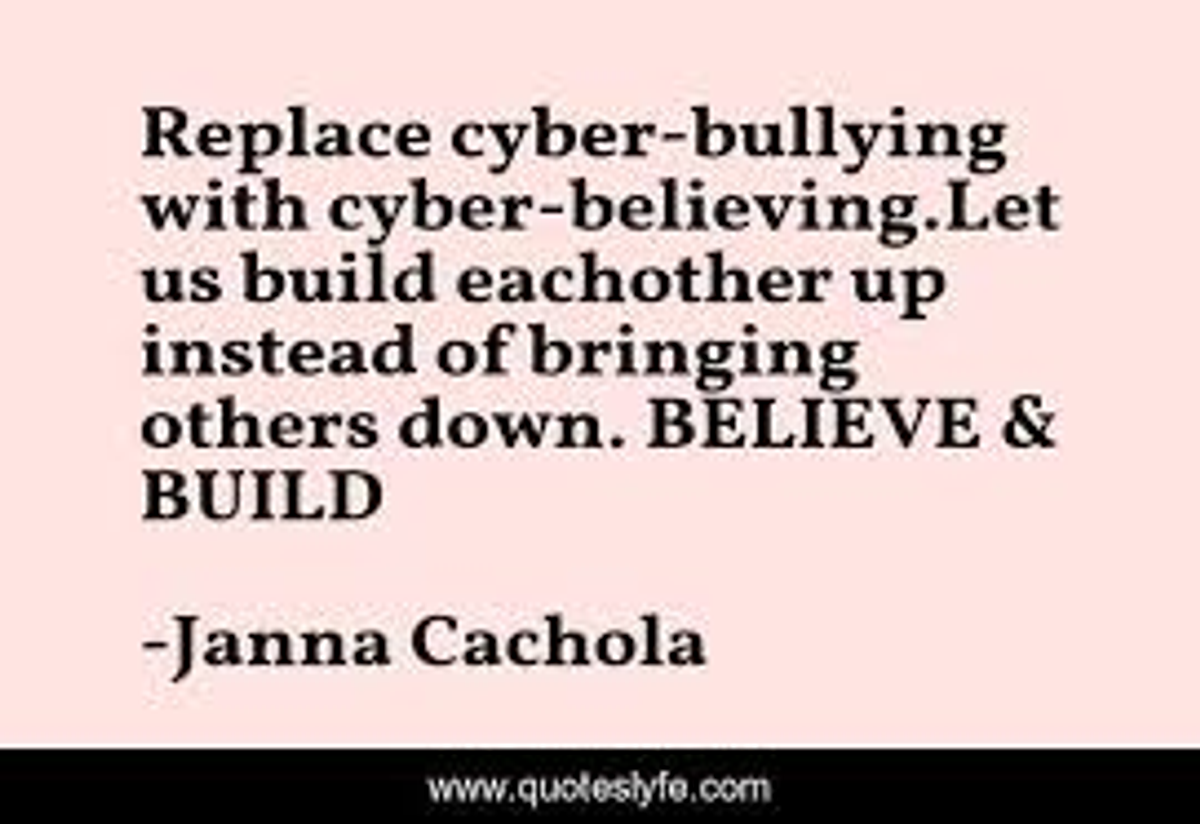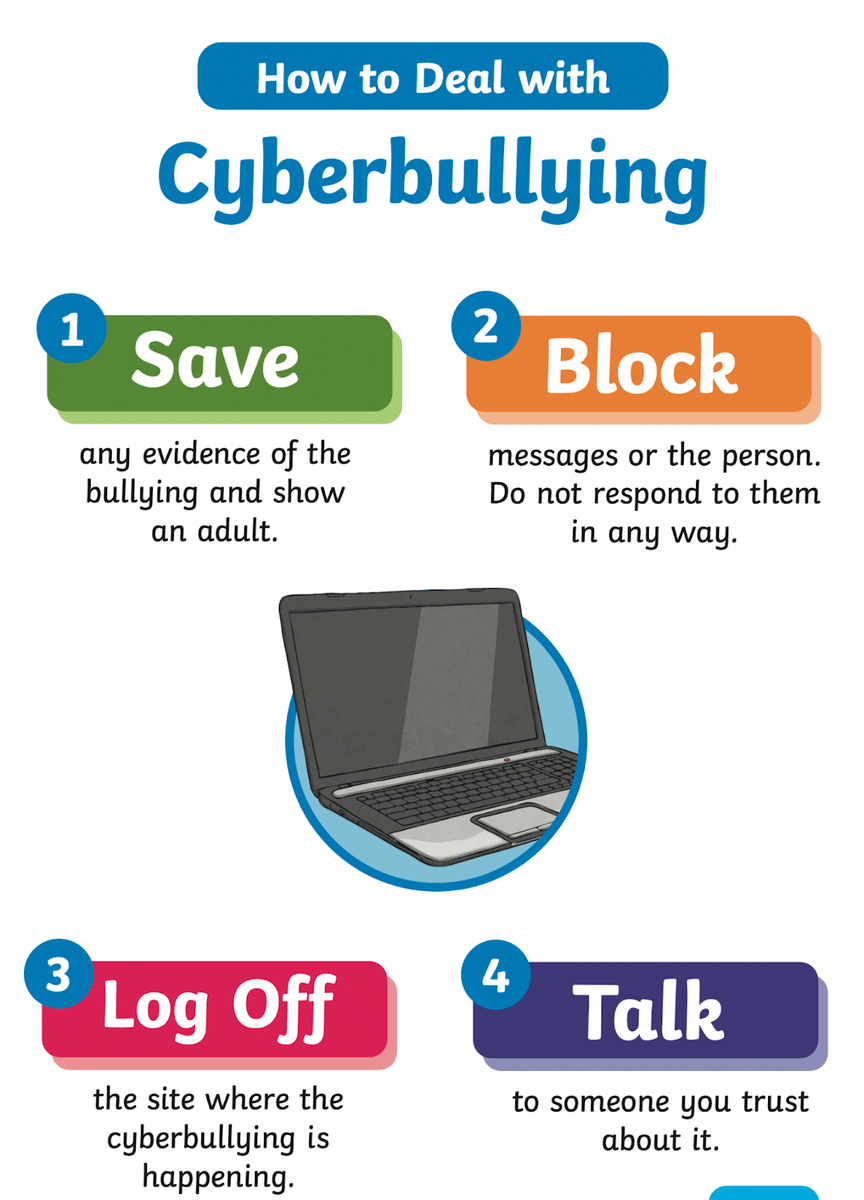Learning Hub and Wellbeing Update
'The Hub has become a real asset in our school, highly valued by staff and students alike.'

Learning Hub and Wellbeing Update
'The Hub has become a real asset in our school, highly valued by staff and students alike.'
Helpful Information for Parents


Teaching your child to be cybersafe will help them to engage with the online world responsibly, safely, and discerningly and can assist to safeguard them from online risks. Sometimes children are faced with online situations that they simply don’t know how to handle and require adult assistance to navigate through the problem. It is important as parents that we are aware of what cyberbullying is and the steps to follow if your child becomes involved in any online issues.
In 2017, 1 in 5 Australian young people reported being socially excluded, threatened or abused online. 55% sought help from their parents, 28% from their friends; 38% blocked the offending social media account; 12% reported it to the website or platform. Additionally, 1 in 5 Australian young people (15% of kids, 24% of teens) admitted behaving in a negative way to a peer online — such as calling them names, deliberately excluding them, or spreading lies or rumours. Of these, more than 90% had had a negative online experience themselves. (Statistics from E-Safety website).
As parents, these statistics can be overwhelming and extremely worrying. The E-safety website is a useful tool for parents to refer to to educate themselves in cybersafety. The following information has been copied from the website and describes what cyberbullying is and what to do if your child is being cyberbullied.






Cyberbullying behaviour can be any or all of the following
What to do if your child is being cyberbullied
Try to resist immediately taking away their device
Removing your child’s phone or computer could be really unhelpful. Cutting off their online access does not teach them about online safety or help build resilience. It could alienate them from their peers, and it also removes an essential tool for them to communicate and connect with friends.
Stay calm and open — don’t panic
You want your child to feel confident that you’re not immediately going to get upset, angry or anxious if they tell you about the situation. You want them to know they can talk to you and feel heard. The best way to do this is make sure you have an open dialogue from the beginning. Talk to them without being judgmental or angry, and make them feel like they can come to you with anything, without fear of being punished.
Listen, think, pause
Gauge the scale of the problem. Does it exist in a peer group or is it more widespread? Is it a few remarks here and there? Or is it more serious? Empathise with your child and let them know that you understand how they feel. How badly is it affecting your child personally? If the bullying itself is not very intense, but your child seems quite seriously affected, this could be a symptom of something larger. In this case you may need to seek help, from a school counsellor, a helpline, or an external professional.
Act to protect your child if necessary
If your child is being threatened, or if they indicate a wish to harm themselves, you should get professional help. Call Triple Zero (000) immediately, if their physical safety is at risk.
Contact a counsellor and/or a support service like Kids Helpline.
Empower your child
Wherever possible, try to build your child’s confidence and help them make wise decisions for themselves, rather than telling them what to do.
If you feel they may be struggling to open up to you, connect them with other trusted adults or with professional support.
Collect evidence
Before you or your child block someone or delete posts or other bullying material, take screenshots and collect evidence including dates and times.
The evidence may be useful if the bullying behaviour continues and you need a record of how long it has been going on. You may also need evidence if you want to report it.
Manage contact with others
Advise your child not to retaliate or respond to bullying messages, as sometimes people say hurtful things just to get a response and it could make things worse. If they have already responded, encourage them not to respond further.
Help your child to block or unfriend the person sending the messages to limit contact with them.
Help your child change their privacy settings to restrict who can see their posts and profile page. Advice on privacy settings is available in The eSafety Guide.
Report
Many social media services, games, apps and websites make it easy to report content posted by other people. Our ‘The eSafety Guide’ has links to report abusive content and online safety information.
If serious cyberbullying is affecting your child and you need help to get the material removed from a social media service or other platform, we can help.
You can make a cyberbullying report to eSafety on your child’s behalf if they are under 18 years of age. It may be useful for you to read the frequently asked questions about making a report and information about how we handle cyberbullying reports
Encourage positive connections and coping strategies
Try to keep your child engaged with interests like sports or dance that connect them with other young people outside school, or with activities that involve extended family. These things will also remind your child that they are loved and lovable. Help your child identify tools they can use to work through the current situation, as well as help build resilience for any future challenges. Check out: Good habits start young for some tips.
Stay aware
Check in with your child from time-to-time about how they are feeling. Keep an eye on their eating and sleeping habits, their ability to concentrate and make decisions and their overall mood. If you notice any changes that concern you, get help for your child through a counselling or online support service.
Kids Helpline is another useful resource website for parents. Please see the link below for further information.
Cyberbullying - helpful information for parents


Here is a 4 step flowchart for children to use and be familiar with should they find themselves involved in cyberbullying. Save, Block, Log off and Talk!


Dimity Hemingway (Leader of Diversity and Hub Leader)